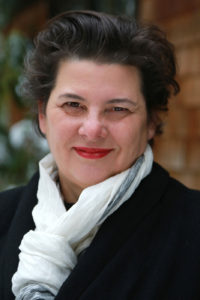About
I’m a post conceptual artist and activist who’s been making work and exhibiting for 40 years. Through 2019, I lived in Los Angeles where I founded the experimental organization The Society for the Activation of Social Space through Art and Sound (SASSAS). I now live in Twentynine Palms where I produce my work and encourage civic engagement via editing and writing The Desert Trumpet newsletter.
Past
After earning an MFA from CalArts in 1985, I developed a post-conceptual practice using photography, video and performance. My work had early success with a solo exhibition in Los Angeles in 1987 and participation in the Whitney Biennial in 1989. Additional recognition through grants and exhibitions followed with solo shows in Paris, London and eventually, New York. My work is represented in the collections of the Museum of Contemporary Art, Los Angeles, LACMA, the Pompidou, MOMA and the Whitney Museum of American Art among other institutions. I’ve been fortunate to receive grants and fellowships from the Pollock Krasner Foundation, the California Arts Council, Creative Capital, Anonymous Was a Woman, the Harpo Foundation, California Community Foundation, the John Simon Guggenheim Memorial Foundation and the MacDowell Colony and have exhibitions in museums and galleries in the US, Canada, Mexico, Europe, and Japan.
From 1998 to 2013, I worked without a studio. Seeking creative outlets, I organized an evening of installations by friends and improvisational music trios combining visual and sound artists. This morphed into SASSAS. Between 2002 – 2019 I supported myself by juggling teaching, SASSAS and my art practice, augmented by grant funding.
Present
In 2016, I accepted a life changing residency at MacDowell – the first time I’d had access to a studio without the pressures of SASSAS and teaching. While there, I made a radical shift and focused on painting. A 2017 solo exhibition of watercolors was greeted with critical and financial success. In 2019, The Security Envelope Grid (1987-1993) – 100 photographs of the graphic patterns found on the inside of bank envelopes – was acquired by the Whitney Museum.
In 2020, I inherited my grandparent’s house in 29 Palms, and spent the pandemic consolidating my studio, storage and residence in one location. The move facilitated both the production of my work and the organizing of archives – the SASSAS archives were acquired by the Getty Research Institute in 2022.
The Work
At MacDowell, I taught myself to paint by “reverse engineering” a crazy quilt acquired from a relative of my Grandmother, who was from Newfoundland. I digitally dissected the quilt into its 123 panels, then created one watercolor for each panel. Patterns I couldn’t render became gray monochromes. I added complexity by painting the panels again, this time in their adjacent relationships. And then I painted them again, returning to the arrangement in the quilt. To date, all the “Newfoundland” paintings start as graphite tracings from photographic templates and incorporate camera lens distortions as well as the damaged, sagging and rumpled fabric of my sources.
I continue to ask “When does pattern collapse into abstraction?” which might be rephrased as “When does order collapse into chaos?” I am interested in being repelled by visual difficulty and yet drawn in and rewarded by “deep looking” – my version of Pauline Oliveros’ concept of ‘deep listening’. Looking at Stuart Davis and recognizing his use of templates and repetition, I came to understand the role improvisation, in music and in paint, plays in my work…and how a quilt from Newfoundland became an on-going theoretical and generative map for my painting practice.
Activism
There is a relationship between the questioning of boundaries in my visual practice and the questioning of the performance of politics that suffuses my activism and writing. I admit that my favorite button as a kid read “Question Authority.” And I’d like to believe that my practice engages in subverting established borders and conventions be it challenging what a documentary photo looks like with the Security Envelope Grid, leveling the hierarchy between audience and performer in concerts at the Schindler House, collapsing genre distinctions in my painting or “daring” to write critically about local City government.
In 1985, I joined the Board of the Foundation for Art Resources, and in 1989 was one of the co-founders of the Coalition for Freedom of Expression in support of artists under attack from Congress for politically volatile content.
From 1998 – 2019 I used events organized by SASSAS to lift up local experimental musicians while facilitating relationships between different groups and bringing a range of legacy artists to LA including Pauline Oliveros, Kelan Phil Cohran, Roscoe Mitchell and Joseph Jarman.
When MOCA fell into financial turmoil in 2008, I co-founded MOCA Mobilization to advocate for maintaining MOCA’s independence.
At Art Center College, I was voted onto the Faculty Council where I advocated for pay equity and transparency. With one of my colleagues I initiated a union drive in 2016-2017. The drive was picked up by new faculty in 2021 and finally successful in 2022.
Upon relocating to Twentynine Palms, I co-founded the advocacy group 29 Palms Neighbors which focused on the impact of short term rentals on neighborhoods and on needed redistricting. Recognizing the impact of sporadic news coverage on civic engagement, we started publishing a City Hall watchdog newsletter, The Desert Trumpet — I am Editor in Chief.
Kicker
A recent encounter sums it up: at an arts event in Joshua Tree, a young artist approached me for advice – she already had my number, but showed me her phone to verify it. Under my name she had typed “art activist.”
